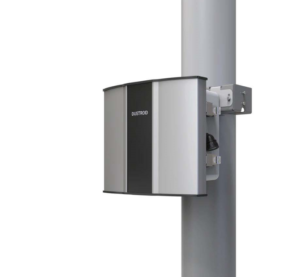Ambient Air Monitoring
Ambient Air Monitoring
Ambient air quality monitoring involves measuring and assessing outdoor air pollutants to evaluate overall air quality, identify pollution sources, and ensure compliance with air quality standards. By continuously tracking air conditions, authorities and organizations can implement strategies to protect public health and improve environmental quality.
What Pollutants Are Monitored?
Air quality monitoring typically includes a wide range of pollutants and environmental factors, such as:
- Particulate Matter: PM1, PM2.5, PM10, PM100
- Gaseous Pollutants: Carbon monoxide (CO), carbon dioxide (CO2), sulphur dioxide (SO2), nitrogen dioxide (NO2), ozone (O3), hydrogen sulphide (H2S)
- Environmental Conditions: Light, ultraviolet radiation (UV), temperature, humidity
- Ambient Noise Levels
Each pollutant affects health and the environment differently, making it crucial to monitor them comprehensively for a complete understanding of air quality.
Key Monitoring Locations
- Urban Areas: Monitoring in city centres and residential neighbourhoods helps track pollution from traffic, industrial activity, and population density, ensuring better air quality for urban dwellers.
- Industrial Zones: Factories and power plants are significant emission sources. Monitoring here ensures compliance with regulations and guides pollution control measures.
- Residential Areas: Monitoring provides insights into the air quality experienced by communities, especially vulnerable populations like children and the elderly.
- Traffic Hotspots: Measuring emissions near major roads, intersections, and congestion points identifies the impact of vehicular pollution, aiding in transportation planning and management.
- Sensitive Locations (Schools, Universities, Hospitals): Frequented by vulnerable populations, these locations are prioritized to ensure health and safety. Monitoring data informs protective measures and educates the public.
- Airports: Airports generate significant emissions from air traffic and ground operations. Monitoring here tracks pollutants like particulate matter and nitrogen oxides, enabling strategies to minimize their impact.
Data Analysis and Reporting
Collected data undergoes thorough analysis to:
- Assess pollutant levels
- Identify trends and compliance issues
- Generate detailed reports for policymakers, authorities, and the public
This data-driven approach supports informed decision-making and the implementation of targeted air quality improvement strategies.
Protecting Public Health
Monitoring helps pinpoint areas with high pollution levels and enables the implementation of necessary measures like health advisories and pollution controls. This is vital in combating issues like respiratory diseases, cardiovascular problems, and other health impacts caused by poor air quality.
Ensuring Compliance with Regulations
Monitoring ensures adherence to national and international air quality standards. By identifying areas where pollution exceeds permissible limits, authorities can take corrective action, safeguarding public health and the environment.
Ambient air quality monitoring is critical for managing pollution, protecting communities, and ensuring a healthier environment. By placing monitoring stations strategically, analysing data rigorously, and addressing problem areas proactively, we can make informed decisions that benefit public health and improve quality of life for all.
Suitable Products
The Polludrone is a fully integrated air quality monitor that delivers reference equivalent performance. Polludrone is a comprehensive solution to monitor all the critical ambient environmental parameters related to air quality, noise, odor, weather, radiation.
PM1, PM2.5, PM10, PM100 (TSP), CO2, CO, SO2, NO,
NO2, O3, H2S, Noise, Light, UV-Radiation, Temperature, Humidity
Dustroid is a Continuous Air Particulate Monitoring system to measure the concentration of dust particulates in the ambient air. The ambient dust monitor range is capable of monitoring various sizes of particulates.
PM1, PM2.5, PM10, PM100 (TSP),
Temperature, Humidity
The Odosense is an e-nose based odour monitoring system designed to monitor various odourful and toxic gases. Odosense continuously detects, measures, and monitors the odourful gaseous contaminants.
SO2, H2S, NH3, CH₃SH, TVOC, CH2O, NO₂, Cl₂, Temperature,Humidity
Ask a question
For further information on any of our products, please complete our enquiry form and a member of staff will respond as soon as possible.
You can also call: +44(0)1629 814351





